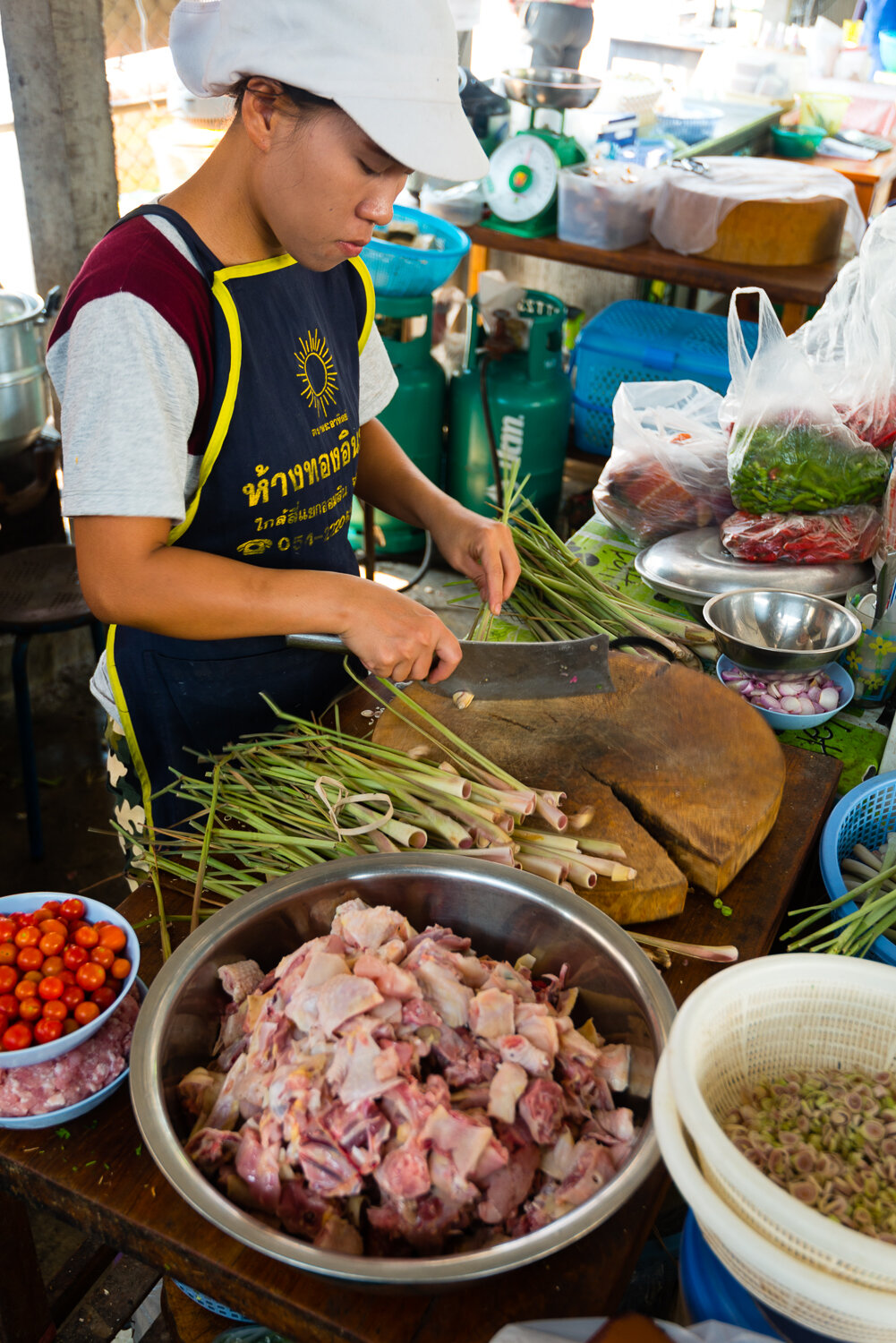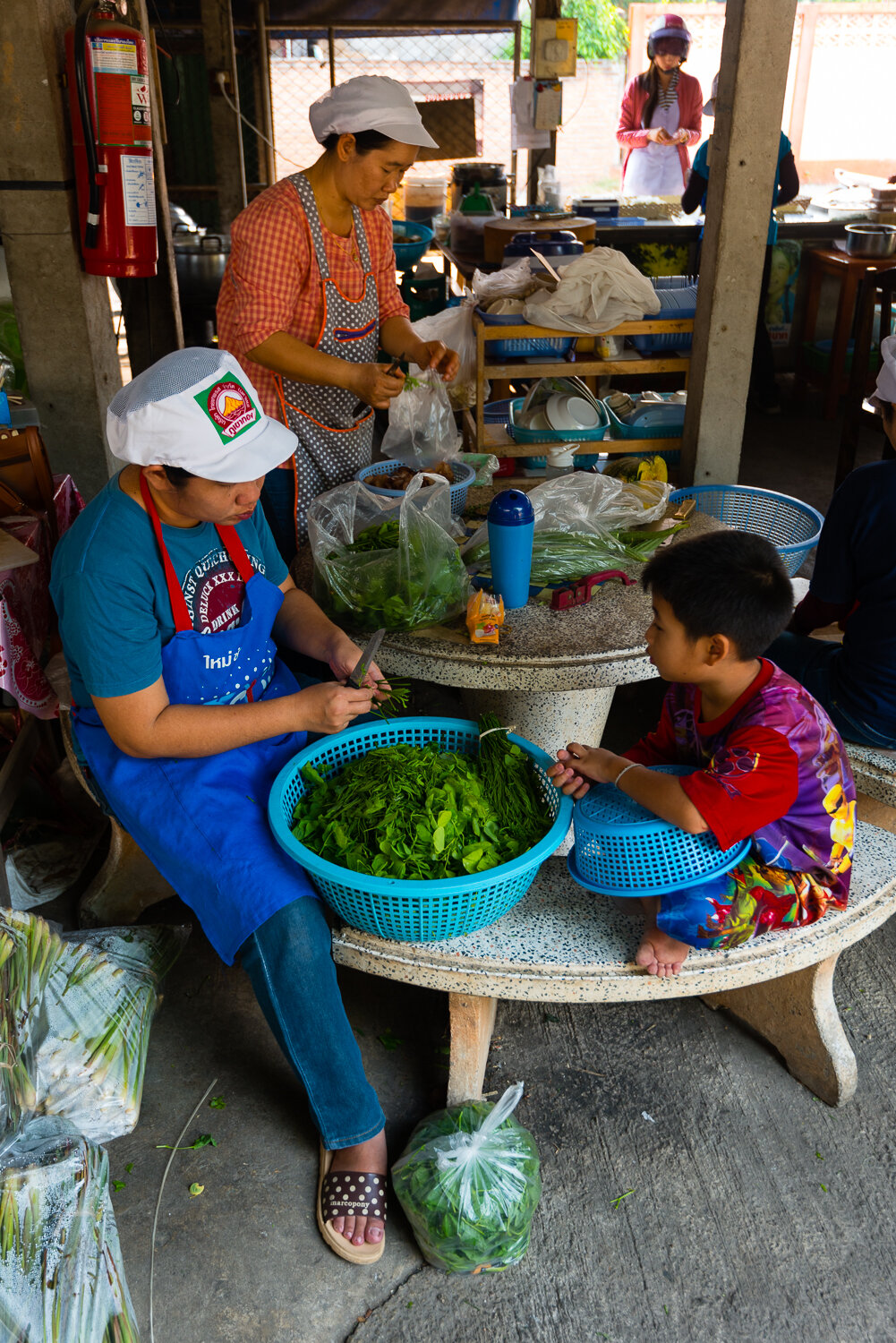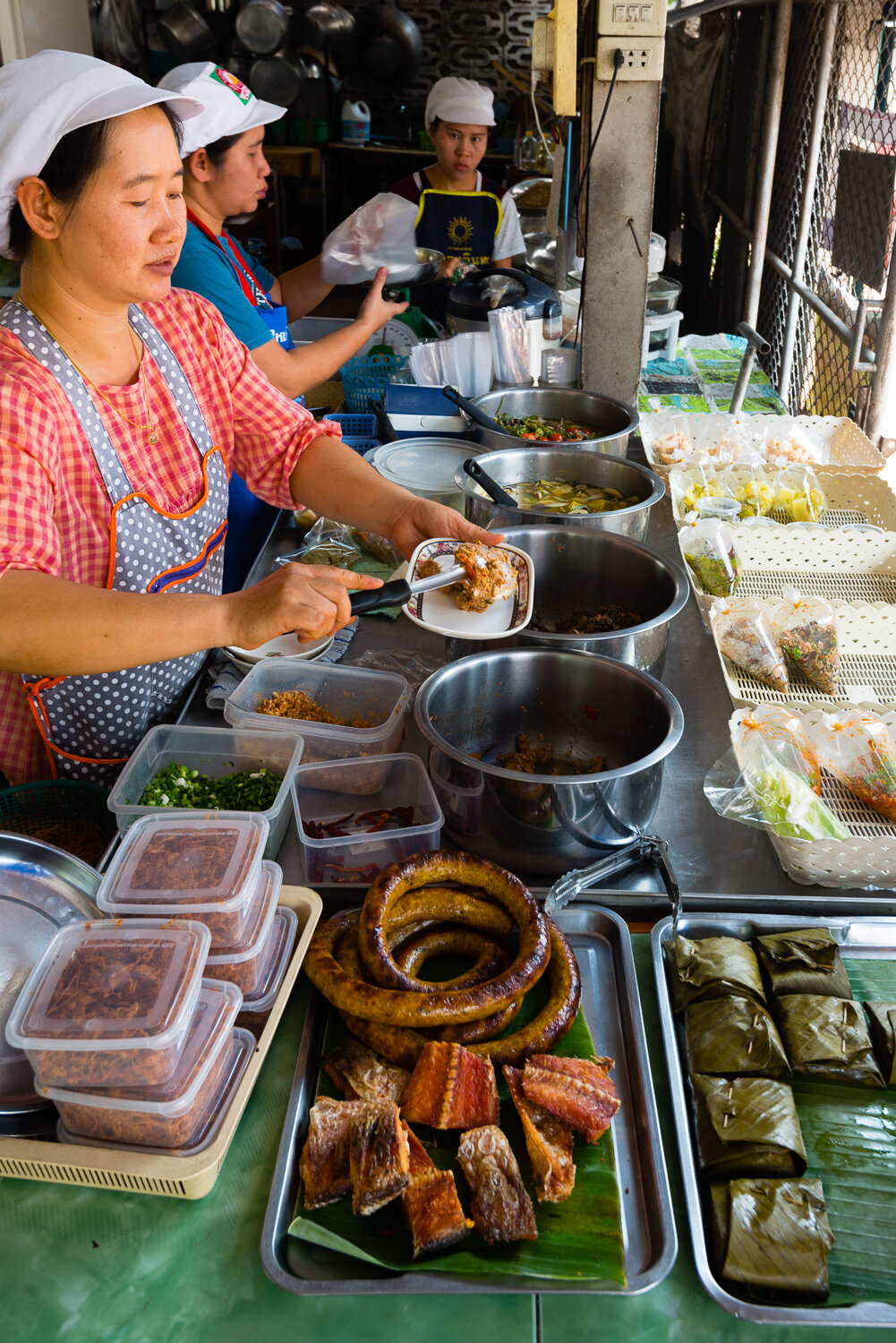This dish, taught to me by Surat Wangwaew, chef/owner of Sai Ua Mae Jan Dee, an excellent northern Thai restaurant in Lampang, is the perfect illustration of what northern Thais tend to do when faced with meat: throw a bunch of fragrant herbs at it. Yet it’s almost certainly Burmese/Shan in origin, likely a cousin of the Shan dish up kai asii pian, an herbaceous curry probably introduced during the late 19th century, when the British logging concession drew Burmese, Karen, Shan and Mon administrators and laborers to Lampang. In the scrum of northern Thai, Shan and Burmese cooking styles and ingredients that followed, Surat’s op kai has come to include dried spice, in this case malaep, a citrusy, numbing seed that frequently appears in dishes in Lampang. The result is an overtly fragrant, spicy, meaty curry that manages to feel both rustic and cosmopolitan.
As a two-pound bird is a rarity outside of Thailand, consider going with a smaller chicken, split in half lengthwise, or two pounds of chicken parts.
Op Kai
อบไก่
An herbal chicken curry
Serves 4
Ingredients
For the Curry Paste
1 teaspoon malaep
½ teaspoon salt
8 medium dried chilies (approximately 5 grams total)
3 large dried chilies (approximately 4 grams total)
1 small piece galangal (approximately 30 grams), peeled and sliced
1 small piece turmeric (approximately 10 grams), peeled and sliced
4 small bunches cilantro (20 grams total), leaves chopped and reserved, roots/stems chopped (you should have approximately 10 grams of roots/stems)
3 stalks lemongrass (approximately 60 grams total), exterior layer and upper green section discarded, lower pale section sliced thinly
6 medium shallots (approximately 80 grams total), peeled and sliced thinly
20 garlic cloves (approximately 40 grams total), peeled
1 tablespoon and 1 teaspoon shrimp paste
For the Curry
1 small free-range chicken (approximately 1 kilogram/2 pounds)
2 tablespoons lard
1 tablespoon fish sauce
10 kaffir lime leaves, torn
1 small bunch green onion (approximately 20 grams), chopped
Thai Kitchen Tools
granite mortar and pestle
Procedure
Prepare the curry paste: To a wok or saute pan over low heat, add the malaep. Toast, stirring occasionally, until fragrant, about 2 minutes. To a mortar and pestle, add the salt, medium dried chilies, large dried chilies and malaep. Pound and grind to a rough powder. Add the galangal and turmeric, pound and grind to a rough paste. Add the cilantro roots/stems and lemongrass, pound and grind to a rough paste. Add the shallots and garlic, pound and grind to a rough paste. Add the shrimp paste, pound and grind a fine paste.
Prepare the chicken: Using a knife, remove the legs and wings from the chicken. Separate the drumsticks from the thighs, and using a cleaver, chop the drumsticks, thighs and wings in in segments approximately 1 inch wide. Using the cleaver, halve the breast lengthwise and chop each half into sections approximately 1 inch wide. Halve any of the larger gizzards.
Prepare the curry: To a large pot over medium heat, add the lard, chicken and curry paste. Fry, stirring to combine, until the chicken has started to firm up and the mixture is fragrant, about 5 minutes. Increase heat slightly, add enough water to just cover chicken (approximately 1 quart). When mixture reaches the boil, reduce heat and allow to simmer, uncovered, until the chicken is tender and the liquid has reduced by approximately a third, about 20 minutes. Remove the curry from heat, add the fish sauce and kaffir lime leaves. Taste, adjusting seasoning if necessary; the op kai should taste lightly spicy and salty (in that order), and should be fragrant from the herbs and malaep.
Remove to a serving bowl, garnish with the cilantro and green onion, and serve warm or at room temperature, with sticky rice, as part of a northern Thai meal.















